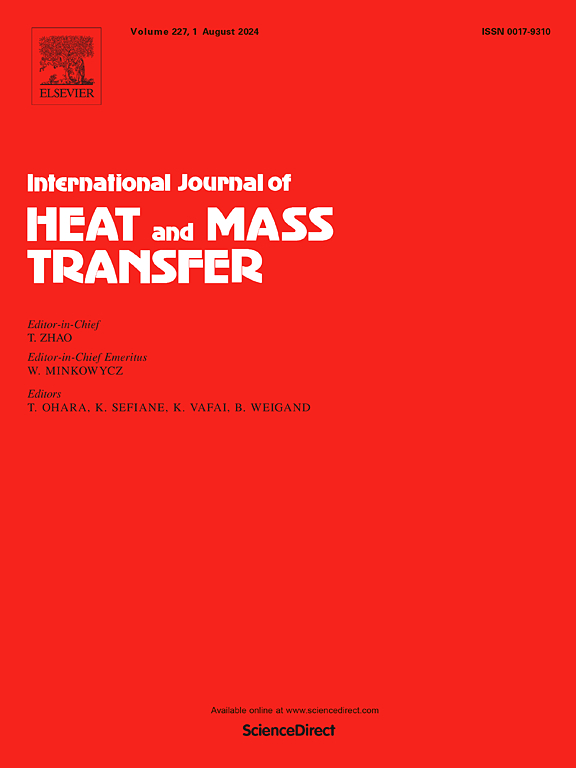电动汽车动力总成油冷却方法研究
IF 5.8
2区 工程技术
Q1 ENGINEERING, MECHANICAL
International Journal of Heat and Mass Transfer
Pub Date : 2025-04-09
DOI:10.1016/j.ijheatmasstransfer.2025.127073
引用次数: 0
摘要
本文对电动汽车动力系统进行了热流体分析,以评估油冷却的有效性和局限性。建立了一个经过验证的数值模型来研究油流行为、搅拌效应和温度分布。结果表明,马达腔内油分布不均匀。只有22.6%的冷却油到达驱动端绕组,而46%到达非驱动端。结果,驱动端比非驱动端温度高4.2%。定子温度比绕组高4.9%,由于散热效率低,转子温度最高。此外,减速器的油再循环(0.02 L/s)降低了冷却效率,特别是在高负载条件下。这些发现为研究电动汽车动力系统的热挑战提供了重要见解,并为优化油流、开发混合冷却策略和改善下一代电动汽车的热管理奠定了基础。本文章由计算机程序翻译,如有差异,请以英文原文为准。
Study on oil cooling method for the powertrain of electric vehicles
This study presents a thermal-fluid analysis of an electric vehicle (EV) powertrain to evaluate the effectiveness and limitation of oil cooling. A validated numerical model was developed to investigate oil flow behavior, churning effects, and temperature distribution. Results show uneven oil distribution in the motor chamber. Only 22.6 % of the cooling oil reached the drive-end winding, while 46 % reached the non-drive end. As a result, the drive end experienced a 4.2 % higher temperature than the non-drive end. The stator temperature was 4.9 % higher than the windings, and the rotor exhibited the highest temperature due to inefficient heat dissipation. Additionally, oil recirculation from the reducer (0.02 L/s) reduced cooling efficiency, particularly under high-load conditions. These findings provide critical insights into the thermal challenges of EV powertrains and serve as a foundation for optimizing oil flow, developing hybrid cooling strategies, and improving thermal management in next-generation EVs.
求助全文
通过发布文献求助,成功后即可免费获取论文全文。
去求助
来源期刊
CiteScore
10.30
自引率
13.50%
发文量
1319
审稿时长
41 days
期刊介绍:
International Journal of Heat and Mass Transfer is the vehicle for the exchange of basic ideas in heat and mass transfer between research workers and engineers throughout the world. It focuses on both analytical and experimental research, with an emphasis on contributions which increase the basic understanding of transfer processes and their application to engineering problems.
Topics include:
-New methods of measuring and/or correlating transport-property data
-Energy engineering
-Environmental applications of heat and/or mass transfer

 求助内容:
求助内容: 应助结果提醒方式:
应助结果提醒方式:


